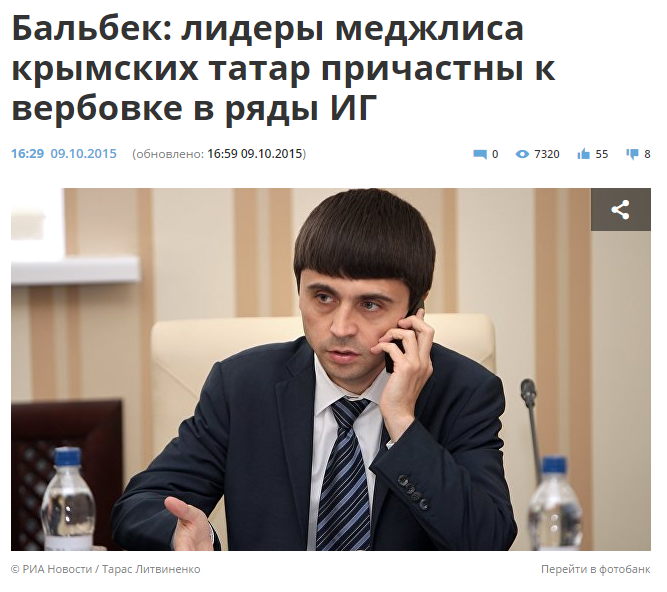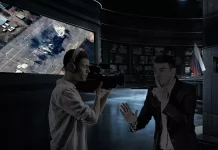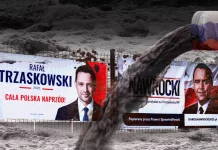The ISIS alleged calls to organize terrorist acts in Ukraine on the eve of the Champions League final are another provocation by Russian special services. However, it is far not the first. Since the end of 2013, Moscow has been actively trying to brainwash the world community into believing in the links between Ukraine and the jihadists.

On the eve of the most significant football event, the Champions League, reports of a possible ISIS attack on Liverpool and Real Madrid football fans appeared in the information space of both Britain and Ukraine. More precisely, the British tabloid ‘The Sun’, using data from closed Telegram chats, reported about the radical Islamists call for solo and mass attacks in the center of the Ukrainian capital — Kyiv. Meanwhile, if you take a closer look at the information provided by the British edition, it becomes clear that the journalists based their judgments only on the posters published by the ISIS — no one provided screenshots of chat communications.
It should be noted that for the first time the information appeared not in ‘The Sun’, but in the Peruvian ‘Libero’, on May 16 — three days before the mass distribution. Where from did the Peruvians get it? It’s very simple: posters were published in various Twitter accounts with a link to the ISIS media structure — “al-Burhan Media Foundation.” However, it is somewhat curious that the search of the materials concerning the attack in Kyiv at the pro-Isis cite bears no fruits.
Latest batch of #IslamicState #ISIS posters threatening #Russia and #FIFAWorldCup #Kiev #kiev2018 pic.twitter.com/EL1ldNd8nK
— TRACterrorism.org (@TRACterrorism) May 15, 2018
The Security Service of Ukraine already evaluated the publications, indicating that they are just the spread of fake news. Moreover, the SSU experts believe that the information itself appeared not without the participation of Russian special services. The primary goal, as pointed out by the SSU, is the escalation of excessive widespread concerns, panic, and chaos among residents and guests of the Ukrainian capital.
The indirect evidence of Kremlin special services participation in this operation is the mass dissemination of this information by pro-Russian media, which, incidentally, did not disdain to use officials as main commentators, including administrative servants of the former runaway president Yanukovych, a man who is now accused of high treason.
At the same time, the central message, which pro-Russian publications laid in their articles, was a call to Ukrainian media to stop publishing materials about the Middle East. That makes sense since it is our Russian-speaking journalists who can influence the opinion of ordinary Russians regarding, for example, the Syrian military campaign.
By the way, one can mention that militants` posts published on social networks carry on propaganda for conducting terrorist attacks in Russia as well — during the World Cup. The question arises: why should the Kremlin call upon to attack its citizens and disrupt the competition? The explanation to this is as simple as the term “information operations to divert attention.”
However, if these attacks are indeed the work of the Russians — what can be said with a high degree of probability — then the Ukrainian secret services will quickly identify those responsible, just as they did before.
The one-year-old publication of the British “Sky News” is also worth recalling. Then the Moscow correspondent of the TV channel, referring to several dubious speakers, including journalists with Russian citizenship, described Ukraine as a kind of trans-shipment base for hundreds of ISIS terrorists. The material referred to the figure of 400–500 fighters. At the same time, the source of such data was not sounded. Moreover, no so-called jihadist witnesses on which the material was pointing out exist.

In general, all this turned out to be a common fake actively used by the Russians telling the whole world about the threat coming from Ukraine.
As a matter of curiosity, during the current information attack, the pro-Russian media, and even the British tabloid ‘The Sun’ made direct and indirect references to the material of 2017, telling about the so-called militant camps in the territory of Ukraine again. In truth, this time half reduced the number of militants.
Another rather nameworthy case dated 2016 is also worth mentioning. Let me remind you that on November 19, 2016, the reputable news agency ‘Agency France Press’ published information allegedly received from the Ministry of Internal Affairs of Kuwait that Ukraine had supplied Chinese man-portable air defense missile system FN-6 to fighters from ISIS. The source of these data, according to journalists, were the terrorists themselves detained by the Kuwaiti police.
After the publication of this material (which was later removed by the French agency), the Ministry of Defense of Ukraine made an official statement that the Chinese MANPADS are not in service with our army.
Moreover, the main detainee, in this case, a citizen of Lebanon, said only then that he had bought weapons somewhere in the territory of Ukraine, but he did not specify which weapons and on what particular region. Later in the Ukrainian Defense Ministry noted that kits for similar MANPADS could be transported in Russian humanitarian convoys, which still illegally cross the Ukrainian border from the Russian Federation and enter the occupied lands of Donetsk and Lugansk regions.
As a matter of curiosity, on the next day, 17 November 2016, Russian newspapers circulated information about a supposedly secret deal between Ukraine and Qatar on the sale of the SA-3 Goa S-125 Neva/Pechora Ground-to-Air missile system. The key message was: Kiev sold to Doha, the main ally of ISIS (according to the reports of Russian journalists), these weapons.
The first fake was published on the basis of fabricated correspondence and documents by the cyber group “Cyberberkut” (RF), then the information was picked up by Russian federal media. In the end, it turned out that there were not only no supplies but also no agreements on these weapons with Qatar.
By the way, this is not the first time when Russian special services tried to draw a line: Ukraine-Qatar-radical Islamists (even before ISIS emerged on the global arena in 2014). In January 2013, after Asad used the chemical weapons against the civilians, Russian special services fabricated electronic correspondence between the leadership of the British private company Britam Defense, which at that time was protecting oil wells in the south of Iraq, and which included enough Ukrainian workers.
According to the fake correspondence, confirmed by copies of the stolen original internal documents of the company and the passports of Ukrainians, Qatar allegedly offered Britam Defense to use “Ukrainian mercenaries” to deliver chemical weapons from Libya to Syria and apply it under the “Russian flag” to organize provocations against Russian Federation.
Henceforth, the whole world would see, especially after the American Tomahawk Land Attack Missile struck on Syrian targets, that it was Moscow who supplied chemical weapons to Syria.
In addition, we ought to recall, in June 2015, the Russian ambassador to Kuwait, Aleksey Salamatin, came to the Foreign Ministry of the host country in order to convince the Kuwaiti authorities that Ukraine had supplied tons of weapons and ammunition through Saudi Arabia to ISIS.
As evidence, he presented the publication of the English site “South Front” on 20 June. In it, an anonymous author assured that during the period from May 22 to May 25, the Ukrainian companies delivered 15 thousand small arms (AK-74) to the Saudi firm TMAS Marketing on the basis of the counterfeit Kuwaiti end-user certificate. Then this Ukrainian weapon allegedly arrived in the Turkish, Lebanese and Jordanian camps for the preparation of the ISIS militants.
The Russian ambassador in Kuwait naively believed that Kuwaiti diplomats would not want to check this information out. However, it turned out to be the opposite: the Kuwaiti authorities discovered that the plenipotentiary representative of Russia had brought to the meeting with diplomats an ordinary reprint from the Russian “Military Observer” on 18 June.
All this is just a small part of those information operations that were directed against Ukraine — to undermine the trust of international partners to our state.
Simultaneously, it should be noted: Russia, since 2013 — before the Vilnius summit — started to link Ukraine with radical Islamists in Syria. It means the Kremlin planned advance military campaigns both in Ukraine and on the territory of Syria.
The Russian special services and the media under their control will subsequently spread fakes about the ISIS fighters who take part in hostilities in the Donbass region, transit bases for terrorists in various cities of our country — from Kharkov to Odessa, — about Crimean Tatars fighting on the side of jihadists in Syria, etc.

Thus, the general scheme, which is still used by the Kremlin, is filled with several important messages:
1. Russia is fighting against ISIS terrorists in Syria;
2. The terrorists of ISIS kill Europeans in the cities of Europe and pose a threat (while, according to Russian Foreign Minister Sergey Lavrov, Europe and Russia ought to join efforts in the fight against Jihadist Terrorism);
3. ISIS is connected with Ukraine that is why Ukraine also poses a threat to the EU;
4. Let’s bomb terrorists together, but you have to return Ukraine to the so-called Russian sphere of influence.
That is why the current information operation, held on the eve of the Champions League final, is not an exception. The Ukrainian security services will soon prove it. However, the world finally has to realize: Ukraine is not a territory for terrorists; it is a country that fights with them. The only one who benefits from destabilizing Ukraine, Europe, the Middle East, and other regions with the ISIS factor is Kremlin.
Dmytro Zolotukhin is deputy minister of information policy of Ukraine. Founder of the Institute for Postinformation Society. Founder of OSINT.Academy. Infowars practician.





